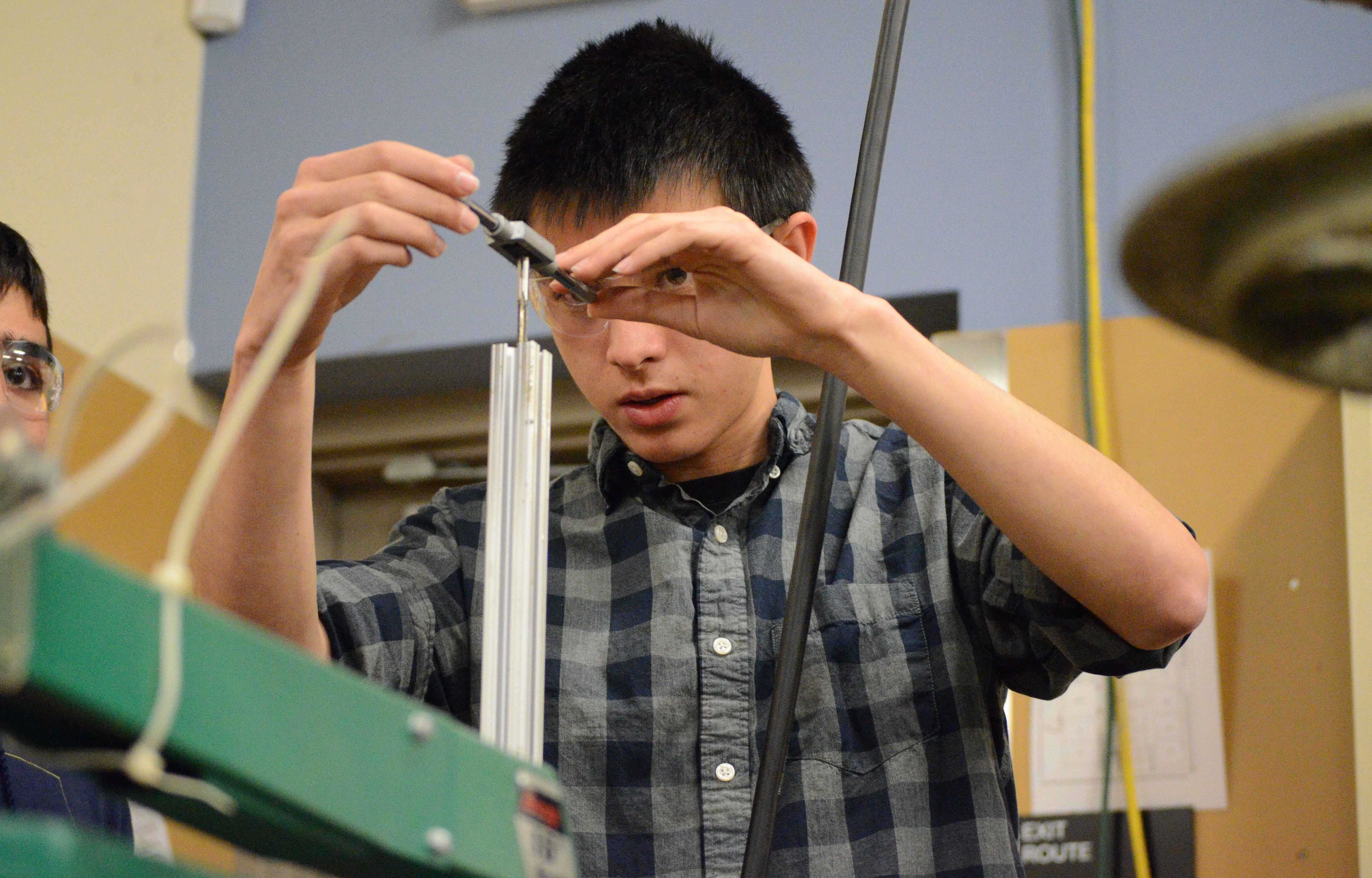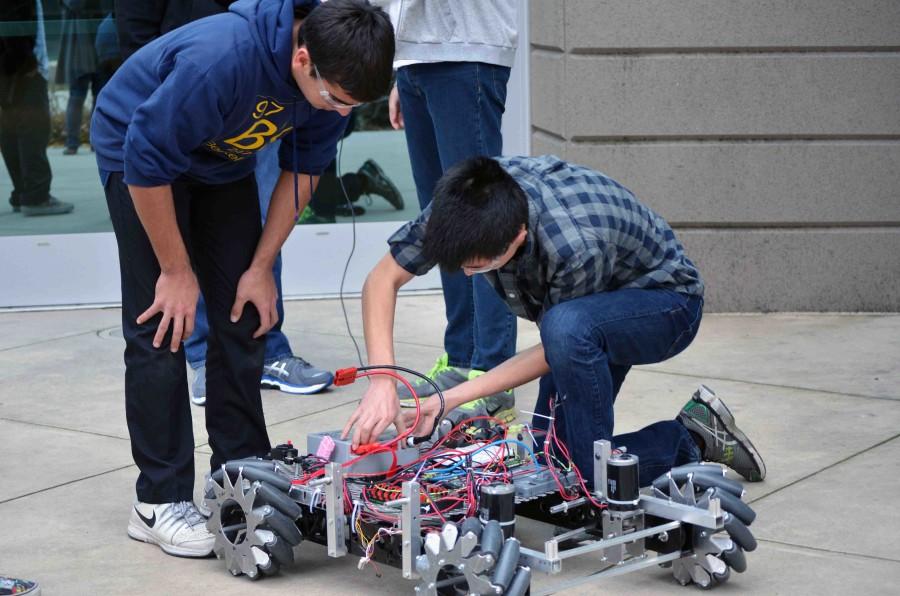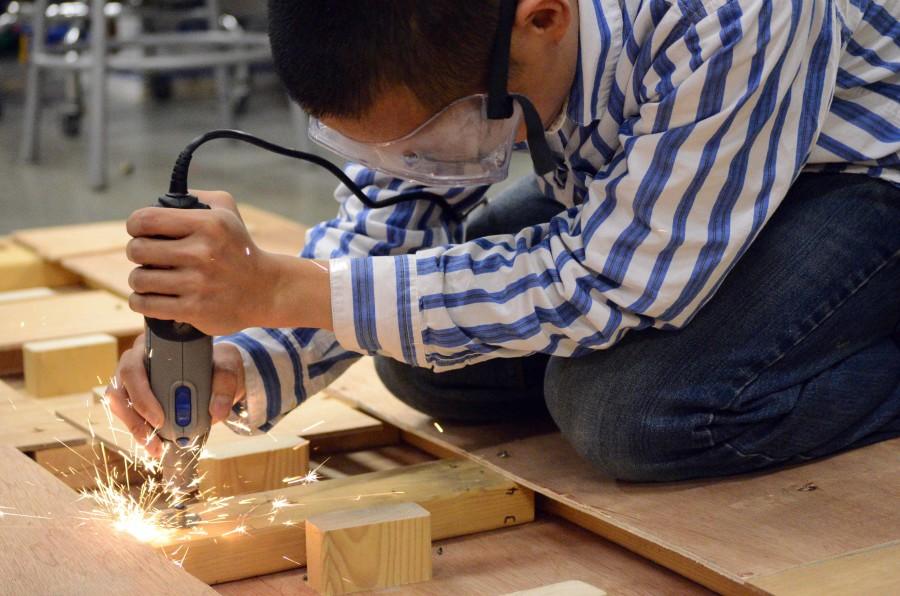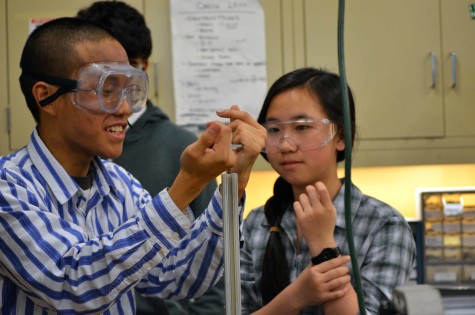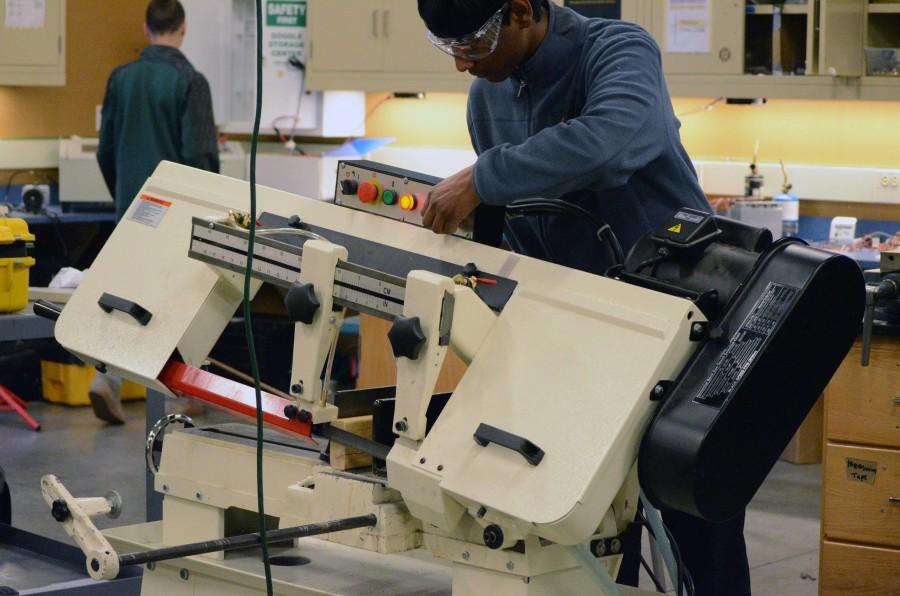184 Hours: Preparing for the FIRST Robotics Competition
January 29, 2015
The clang of metal parts striking together echoes through Nichols 312, a room filled with programmers staring at their computers. In the robotics machine shop behind the room, a horizontal band saw in the center of the garage whirrs as it slices diagonally across an aluminum beam. In a corner, team members stand hunched over an unfinished metal drive train as they assemble the parts for a robot. Scattered across the room, other members drill, cut and measure, focusing intently on their work.
The clock ticks on from 4 to 5 p.m. Snacks are scattered and parents bring in dinner. Six days per week for six weeks, this scene will play out over and over as Team 1072 chugs through the 184 hours it has to plan, build and construct a robot for the FIRST Robotics Competition (FRC).
Bot-building
From Jan. 4 to Feb. 17, robotics team members work around the clock to finish building their robot. For the six weeks of build season, the robotics shop remains open for four hours after school on weekdays and for eight hours on Saturdays. Members often squeeze in homework assignments while waiting in the shop, while parent volunteers bring snacks and dinner.
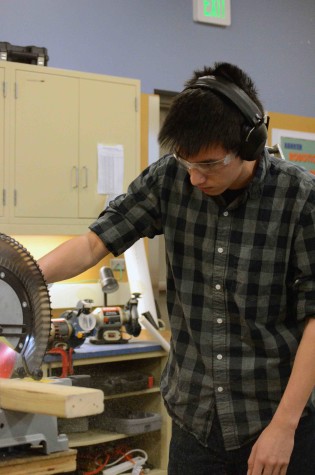
This year’s FRC (FIRST Robotics Competition) challenge, Recycle Rush, is a recycling-themed game played by two alliances of three robots each on a large rectangular playing field. The game consists of robots scoring points by stacking totes on scoring platforms, capping them with recycling containers, and depositing pool noodles that represent litter within them. In keeping with the theme of recycling, teams can reuse or recycle all of the game pieces at the end of the season.
Each robotics member belongs to one of four sub-teams, three of which involve engineering and building the robot. Members of the mechanical and electrical sub-teams spend their time in the machine shop, milling parts and wiring components. Members of the programming sub-team write and test the code that controls the robot.
“We have an autonomous period where the robot has prebuilt code that it has to run for a 15-second period. In that time period, you have to make sure it’s coded to be able to see whatever target you want it to see, reach the target and move it to its proper location,” VP of Operations Neymika Jain (10) said. “Then there’s the teleop period, where the human player goes ahead and moves the robot.
Not Just Engineering
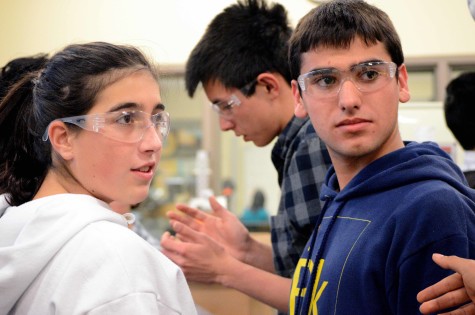 While engineering subteam members deal with the feat of building the robot, members of the fourth robotics subteam manage a part of the funds, take care of public relations, and organize a kickoff breakfast for other robotics teams every year.
While engineering subteam members deal with the feat of building the robot, members of the fourth robotics subteam manage a part of the funds, take care of public relations, and organize a kickoff breakfast for other robotics teams every year.
“[The kickoff breakfast] is an annual event where we […] provide breakfast for the other teams around this area that come together to see this game,” Operational subteam president Matthew Cheng (10) said. He stated that the team courts donors, such as IHOP, to give the funds for the meal.
Last year, the operations subteam won the First Entrepreneurship award for their business plan at the Central Valley competition. According to Matthew, members of the operations team do not often participate in shop work, instead focusing on managing the team’s backend.
“We’re the management section. We focus a lot on marketing and PR and the image of the team, but we also try to have team bonding events. We coordinate a lot of things with the team so that things are more cohesive,” Matthew said.
Dealing with Defeat
In 2014, Harker robotics placed 38th in their in the Central Valley tournament and 35th in the Silicon Valley regional tournament. The year before, they placed 31st and 42nd respectively.
“The team has not done quite so well as, say, the rest of Harker’s teams do in competitions like this,” Naman Jindal (11) said.
Within the past five years, the team’s highest competition rank was 10th place standing at the 2011 Silicon Valley tournament.
Team 1072’s last national championship bid occurred in 2005. Alumnus Vijay Umapathi (‘06) was a member of the team during the winning year and became President of robotics the subsequent year.
“[That year] I think we picked the right strategy, and then we implemented well on pretty much everything. Strategy is a huge part of it,” Vijay said. The team did not qualify for the championship the following year.
“I think that was a mistake we made when I was president. We didn’t have a super-systematic way of thinking through strategy,” Vijay said.
Despite not advancing, the team has won other awards in competition. In 2012, robotics adviser Dr. Eric Nelson was a finalist for the Woodie Flowers mentor award.
